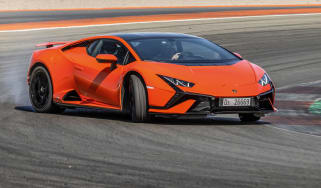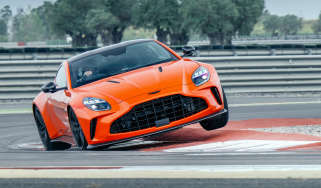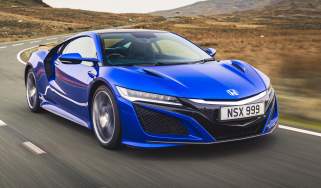The original McLaren F1 press release in full - Every detail of the incredible V12 supercar - McLaren F1 suspension and steering
As McLaren re-publishes the full, original 1992 press release for its F1 supercar, it's a perfect time to celebrate the F1, we think
THIS RADICAL NEW SYSTEM OFFERS A HITHERTO IMPOSSIBLE COMBINATION OF COMPLIANT FREEDOM YET PRECISE GEOMETRIC CONTROL
The McLaren F1’s suspension will offer a remarkable breakthrough in compliant ride comfort without compromising Formula 1-standard geometry control.
Since the rigid suspension mountings necessary in racing would transmit unacceptable shock, vibration and noise in a road car, adequate compliance and truly controlled geometry have until now been mutually incompatible.
Now McLaren Cars’ ‘Ground-Plane Shear Centre’ (or ‘GPSC’) front suspension-mounting system offers a solution to this age-old problem. The front suspension features unequal-length double wishbones supporting a machine cast-aluminium hub carrier. Each front suspension wishbone is connected to a subframe via plain bearings, the frame itself being four-point mounted upon the carbon monocoque via purpose-designed elastomeric bushes.
This radical new system offers a hitherto impossible combination of compliant freedom yet precise geometric control, presenting in principle a tyre contact patch stiffness three times greater than that at the hub centre, compared to a conventionally compliant system’s stiffness of one-third that at the hub.
Thus ‘GPSC’ preserves maximum ‘feel’ for the F1 driver, while still insulating its passengers from road shock.
Above all, ‘GPSC’ exhibits four major Formula 1 attributes; it is elegant, simple, light and it works.
Optimum steering precision is achieved by housing its rack directly within the cast front bulkhead for maximum rigidity. It requires no power assistance.
Because the car’s rear end is powered, ‘GPSC’ is inappropriate there, but despite a different approach in detail, the innovative solutions adopted are equally significant, achieving minuscule deviation from the theoretical designed geometry even under the most extreme braking, cornering and tractive inputs.
Rear suspension loadings are all fed via the transaxle and engine assembly into the central monocoque chassis, drive and braking loads being accepted via axially rigid bulkhead mountings. Torsional loads are absorbed via innovative new ‘Inclined Shear Axis’ – ‘ISA’ – mounts into the shoulder beams each side of the engine.
All mounting bushes also act as high-effective noise and vibration insulators, while the V12 engine’s substantial mass is employed as a vibration damper to absorb high-frequency road shock transmitted via the F1’s exceptionally precise rear suspension geometry.
The F1’s lower-wishbone rear mounts are linked laterally by a compliant beam, flexibly mounted on the transaxle casing to permit asymmetrical displacement of either wheel, but rigid resistance to symmetrical loadings.
McLaren Cars have selected Bilstein to design and develop the F1’s special lightweight monotube gas-pressurised dampers. These race-derived units are manufactured from aluminium to give 30 percent greater heat dissipation and are accurately tuned and adjusted to suit the F1’s characteristics.






